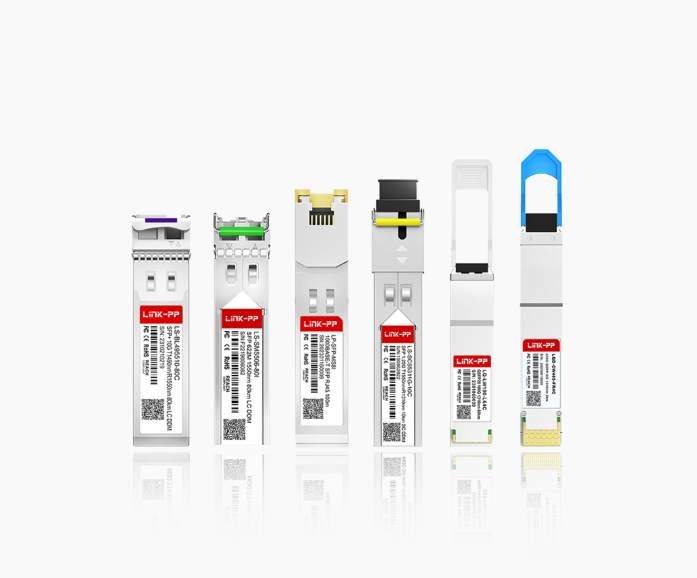
The insatiable global appetite for data, fueled by AI/ML workloads, hyperscale cloud computing, and the relentless expansion of 5G/6G networks, is pushing data center infrastructure to its absolute limits. In this high-stakes race, 1.6T optical transceiver modules stand as the next great frontier, promising to double the bandwidth of today's 800G systems. But achieving this leap isn't just a simple generational upgrade—it's a fundamental re-engineering challenge that places unprecedented strain on every component, especially the humble yet critical connector.
This article delves into the core technical challenges of 1.6T optical transceivers and explores how they are fundamentally reshaping high-speed connector design requirements for data centers.
🚀 The Daunting Path to 1.6T: More Than Just a Number
Doubling the data rate from 800G to 1.6T isn't as simple as flipping a switch. Engineers face a multi-front battle against physics itself, primarily in three key areas:
1. The Signal Integrity Labyrinth
At 1.6T (or 1.6 Terabits per second), we are solidly in the realm of 224G PAM4 per lane. The electrical signals traveling within the module and on the host PCB are incredibly fragile. At these frequencies, even the most minor imperfections—a tiny impedance mismatch, a slight skew between lanes, or crosstalk from a neighboring channel—can degrade the signal to the point of being unusable. Maintaining a clear "eye diagram" requires sophisticated signal integrity analysis and materials that were once reserved for specialized RF applications.
2. The Thermal Management Bottleneck
Power consumption is a monumental hurdle. Early 1.6T prototypes are estimated to consume over 25 watts. Packing this much heat-generating circuitry—including the laser drivers, modulator drivers, and DSP—into a standard form-factor (like QSFP-DD or OSFP) creates a thermal density nightmare. Effective cooling is no longer a luxury; it is the single biggest factor determining module reliability and lifespan. This directly impacts the materials and design of the transceiver cage and the surrounding connectors, which must now act as efficient heat dissipation paths.
3. The DSP Power and Complexity
To overcome the physical limitations of the channel, 1.6T modules rely heavily on powerful Digital Signal Processors (DSPs). These chips are the workhorses that correct errors, compensate for signal distortion, and enable the use of PAM4 modulation. However, this comes at a cost: DSP power consumption can account for a significant portion of the module's total power budget. The quest for more power-efficient DSPs is a critical area of R&D, directly influencing the overall thermal profile and feasibility of the design.
🚀 The Heart of the System: A Closer Look at the 1.6T Optical Module
An optical transceiver is a marvel of miniaturization, essentially a self-contained data conversion factory. Its core function is to convert electrical signals from the switch ASIC into optical light pulses for transmission over fiber, and vice-versa.
For a 1.6T module, the internal architecture is typically based on 8x 200G lanes or 16x 100G lanes. This high lane count means more lasers, photodiodes, and associated circuitry must be packed into the same confined space. This internal density exacerbates the challenges of crosstalk and heat. The choice of technology—whether Silicon Photonics (SiPh) for its integration capabilities or more traditional EML-based designs—plays a crucial role in determining the module's performance, power efficiency, and ultimately, its cost.
Leading manufacturers are tackling these integration challenges head-on. For instance, LINK-PP's OSFP-based 1.6T module, leverages advanced Silicon Photonics and a proprietary, power-optimized DSP to deliver exceptional performance while managing thermal output, making it a robust solution for next-generation AI cluster networks.
🚀 The Ripple Effect: How 1.6T Drives a Connector Revolution
This is where the story gets especially interesting. The challenges inside the module create a ripple effect, forcing a revolution in the external components that interface with it—primarily the I/O connectors and optic cages.
The traditional electrical interfaces that served 400G and 800G generations are now becoming the bottleneck. The requirements for 1.6T-compatible connectors are brutally strict:
Higher Bandwidth Density: They must support the full 1.6T aggregate data rate with minimal signal loss.
Reduced Insertion Loss: Every fraction of a decibel of loss counts at 224G PAM4 speeds.
Superior Impedance Control: Consistency is key to preserving signal integrity across all lanes.
Enhanced Shielding and Lower Crosstalk: Preventing electromagnetic interference (EMI) and crosstalk between closely packed pins is non-negotiable.
Improved Thermal Performance: Connectors must be designed with materials and structures that aid in heat dissipation from the module.
This has led to the development and adoption of next-generation connector standards. The QSFP-DD and OSFP-XD form factors are designed specifically to accommodate the increased number of high-speed lanes required for 1.6T and beyond, offering a denser and more performative interface than their predecessors.
The table below summarizes the key connector evolution driven by increasing data rates:
Data Rate (per Module) | Common Form Factors | Key Connector Challenge | Next-Gen Evolution |
|---|---|---|---|
400G | QSFP-DD, OSFP | Transition to 8x 50G PAM4 lanes | Increased pin count for higher speed |
800G | QSFP-DD, OSFP | Scaling to 8x 100G PAM4 lanes | Improved signal integrity & thermal specs |
1.6T | OSFP-XD | Mastering 224G PAM4 per lane | Maximum density, minimal loss, integrated thermal management |
🚀 Future-Proofing Your Network: The Role of Strategic Partnerships
Navigating this complex landscape of co-packaged optics, 224G PAM4 readiness, and evolving connector standards requires more than just buying components. It demands a strategic partnership with suppliers who are at the forefront of this technology.
Choosing a partner like LINK-PP, which invests deeply in R&D and understands the intricate interplay between transceiver design, connector capabilities, and system-level performance, is crucial. Their expertise ensures that your infrastructure investments today are compatible with the demands of tomorrow.
✅ Are you designing for the AI-driven future?
Understanding the interdependencies between 1.6T transceivers and connector design is the first step to building a robust, scalable, and high-performance network.




